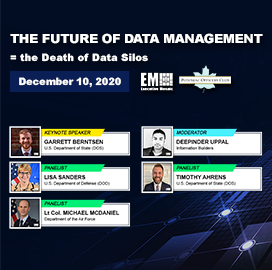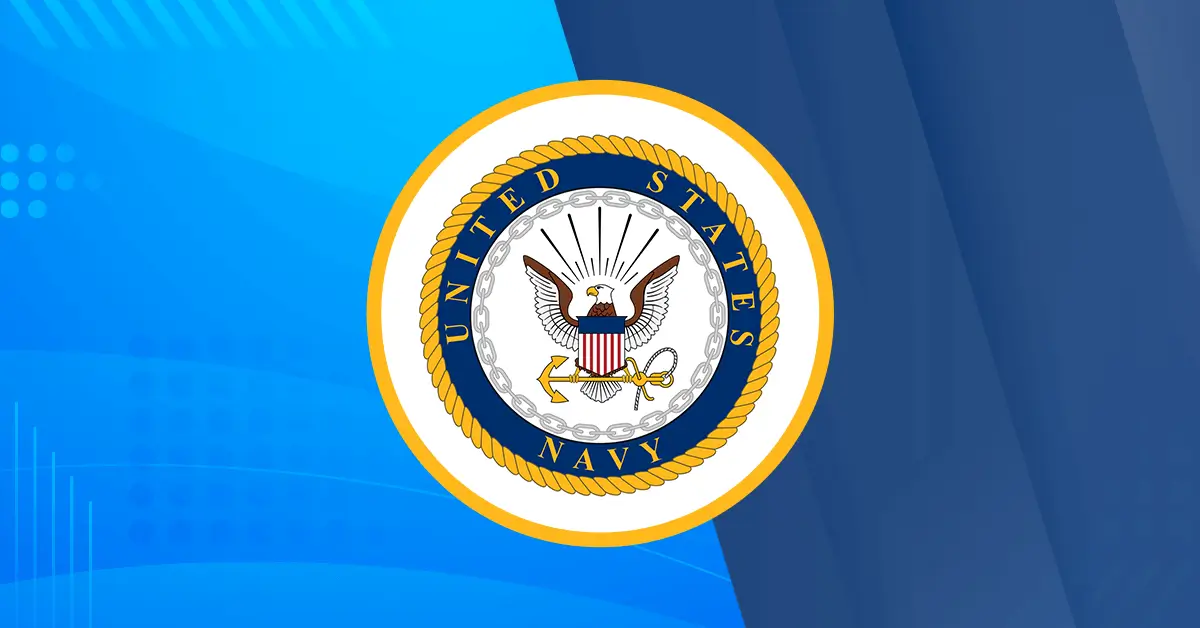From augmented analytics to AI-driven cloud reservoirs, the future of data management may seem unclear. As agencies invest millions in data infrastructure and data scientists, focus is starting to shift to task automation, secure information sharing, and to future-proofing government systems.
Potomac Officers Club’s The Future of Data Management = The Death of Data Silos will examine current cutting edge data methodologies and look to prepare government agencies for the future of data management.
To register for The Future of Data Management = The Death of Data Silos, as well as view upcoming opportunities, visit Potomac Officers Club’s Event Page.
Federal agencies have made recent efforts to spearhead data initiatives across the private and public sector, such as establishing data departments, enhancing securing and increasing data sharing, to support and leverage big data.
The Federal Data Strategy 2021 Action Plan is expected to be released in December 2020, with more than 80 agencies having installed chief data officers (CDO) since the passage of the Foundations for Evidence-Based Policymaking Act was passed in 2019.
The next Federal Data Strategy action plan has the potential to solidify the CDO Council at the Office of Management and Budget (OMB). Scalable, automated platforms could help agencies establish data quality controls, monitor assets via dashboards, share information and monitor compliance with regulations.
The recent data policies will enable agencies to maintain an accurate data inventory, which was proposed in the 2020 Action Plan. The OMB has also minimized policies under the Federal Information Security Management Act (FISMA) to ensure consistent measurement from year-to-year.
The latest memo from OMB director Russ Vought has explained requirements for fiscal 2021, which is similar to the 2019-2020 memo except for a section concerning the continuous diagnostics and mitigation (CDM) program.
By the end of fiscal 2021, agencies must certify to OMB and the Cybersecurity and Infrastructure Security Agency (CISA) in the Department of Homeland Security that they have implemented the CDM Program Data Quality Management Plan (DQMP) and can be “fully able to exchange timely data to the federal dashboard.”
Kevin Cox, the CDM program manager at CISA, said during an event in June that the CDM data management team defined “enhanced data requirements, including completeness, accuracy, and timelines for CDM solutions.”
In addition to OMB, the National Institute for Standards and Technology (NIST) framework includes five new control families that are broken out into individual categories and subcategories to help manage and leverage data.
The categories include: develop the understanding to effectively manage privacy risks; create an internal culture and corporate structure to support risk management and data governance; and develop policies, procedures and practices to effectively control and protect data.
The framework also requires participants to provide communication channels for employees to ask questions and raise issues related to privacy and data management, and implement technical, administrative, and physical controls to protect and maintain the integrity of data.
Garrett Berntsen, deputy chief data officer (CDO) of the U.S. Department of State, will be featured as a keynote speaker during Potomac Officers Club’s The Future of Data Management = The Death of Data Silos virtual event on December 10th.
The event will also feature an expert panel, moderated by Deepinder Uppal of Zscaler, that will further address how to manage and leverage data. The panel will host Lisa Sanders of DoD, Lt Col. Michael McDaniel of the U.S. Air Force, and Timothy Ahrens with the U.S. Department of State.
To register for The Future of Data Management = The Death of Data Silos, as well as view upcoming opportunities, visit Potomac Officers Club’s Event Page.






